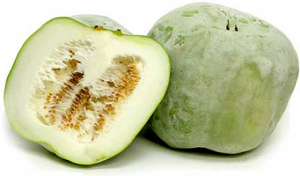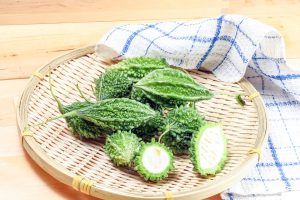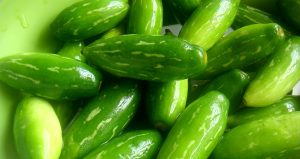Gourds and squashes are brimming with nutrients — vitamins and essential minerals, plus with their high-water content, they make for ideal vegetables in all-weather conditions, especially hot weather
Gourds and squash belong to Cucurbitaceae — a highly specialised and unique family of mainly trailing plants of subtropical or tropical, moist or dry habitats
Cucurbit is a general term used to describe all members of the Cucurbitaceae family, which also includes cucumber, melon, and watermelon as well as the focus of this article — squash, pumpkin, and gourd.
The common names of these vegetables overlap considerably. The gourds are the source of least confusion since they are more or less readily identified by appearance regardless of species. Squash and pumpkin are used interchangeably depending on local custom. Any confusion that may exist is among academics who quibble over nomenclature. Retailers, consumers, and cooks generally do differentiate among squash, pumpkin, and gourd, and if not, little damage is done. Because as they say, a rose smells as sweet by any other name. Similarly, curcubits — whether gourds, pumpkins or squash — do a whole lot of good for our bodies.
Gourds, squash and pumpkins have a long history and some interesting stories of cultural and medicinal uses. In India we use these vegetables extensively throughout the year. Much like the underdog veggie, they don’t get to bask in the limelight or bag the award as ‘superfoods’, however they possess a treasure trove of nutrients and a succulent taste that blends seamlessly in any preparation.
In India there are about 11 types of gourds. We love our gourds! Let’s have a quick look at some popular ones:
Ash gourd (Winter melon) or kumda, aka the “cool” veggie

Ash Gourd (Benincasa hispida) or wax gourd is the only member of Benincasa genus. Known in Hindi as Petha, pethakaddu, the Yogis of India have long regarded ash gourd as one of the most naturally energising foods due to its high quotient of what Yogic science refers to as “prana”, or vital life energy. Sadhguru advocates that you drink one glass of ash gourd juice in the morning, and you will experience tremendous amount of coolness in the body, while at the same time it brings alertness into your intellect. Children must drink ash gourd juice for this reason. You will notice a distinct change in the sharpness of your mind after a little as a week of drinking the juice.
Sponge gourd or turai

Sponge Gourd (Luffa aegyptiaca) is the most popular species of Luffa Vegetables, Ribbed gourd being another and eaten fried or cooked with chickpeas or dried peanuts or with beans.
Bottle gourd or lauki

Bottle gourd (Lagenaria siceraria) known by many other names, such as lauki in Hindi, also called as calabash gourds. Its tremendous benefits when consumed in summer, also include keeping your blood pressure stable. Lauki is a popular veggie and is added to juices and soups for its ability to cleanse the liver, promote heart health and help in weight loss.
Bitter gourd or karela

Bitter Gourd (Momordica charantia) is widely grown in Asia. It originated from the South Indian state of Kerala was christened as Karela in Hindi. You either love karela or hate the taste, but it’s great for your health. Bitter gourd is eaten with roasted coconut and peanuts by coastal India. The various ways in which different states prepare karela is truly interesting and quite amazing. Karela is a popular a medicinal food for diabetics.
Ridge gourd or dhodka

Ridge Gourd (Luffa acutangula) is also known as Ribbed gourd or Angled luffa, cultivated and is popularly used as a vegetable in India.
Snake gourd or chichida

Snake Gourd (Trichosanthes cucumerina) is very popular in the cuisine of Maharashtra and also grown in some home gardens in India. The super vegetable hosts a list of health benefits and used in traditional medicine for many years.
Pointed gourd or Parwal

Pointed gourd (Trichosanthes dioica) is another vine plant grown for green fruits with white stripes and a vital summer vegetable in India. Parwal vegetables are a good source of vitamins and minerals. Though cultivated mainly in eastern part of Bengal, Assam and Bihar, parwal is a very popular choice as a sabzi in most Indian households.
Ivy gourd – little gourd or kundru or tendori

Ivy gourd also known as little gourd (Coccinia grandis) is a popular vegetable in southern India and grown for its edible young shoots. Little gourd fruit from a tropical vine is commonly found in the south India and have been used in traditional medicine.
Apple gourd or tinda

Tinda is another famous Indian gourd/ squash vegetable, especially popular in South Asia and also known by name apple gourd. Apple gourd (Praecitrullus fistulosus) is a very unique apple sized green coloured fruit. Its taste comes through in the various curries and gravies that it is used for.
Spiny gourd or khekesa

Spiny Gourd (Momordica diorcia) is used as a vegetable across India and known by various names in different regions of India. Kantola is known as kakoda in hindi, Kheksi in Chhattisgarh. Some parts of the Momordica dioica are used as traditional herbal remedies for diabetes.
Squashes and pumpkin

There are over 45 varieties of squash!
Squash has a light and hollow stem when compared to pumpkin. There are different winter and summer squashes such as butternut, acorn, delicata, hubbard, kabocha, spaghetti squash, and zucchini.
Pumpkin is an orange or yellow vegetable that is popular worldwide due to its hundreds of culinary uses. It is a delicious and extremely nutritious vegetable. Pumpkin flesh, seeds, and leaves are all edible. In fact, pumpkin seeds are an excellent source of essential fatty acids (efa’s) and they render energy necessary for body metabolism and muscle contractions.
The health benefits of gourds, squash and pumpkin
These super veggies provide many health benefits including, but not limited, to the following:
- Heart health: They are rich in potassium, which is essential to regulating blood pressure. Just one cup of butternut squash provides nearly 1/4 of your daily potassium requirement.
- Healthy eyesight especially for seniors: One cup of pumpkin can give you 200% of your recommended daily vitamin A intake. If you get it, your eyes will thank you. Vitamin A helps you have healthy eyes and see more clearly, especially in low-light conditions.
- Fight inflammation: Pumpkins and gourds contain anti-inflammatory compounds that help reduce inflammation throughout the body. Compounds like omega-3 fatty acids, different carotenoids, and some naturally occurring sugars work together to fight chronic inflammation.
- Improve circulation: Many gourds are high in minerals such as copper and iron that can aid in the improvement of circulation and deliver oxygenated blood to the cells in your body.
- Strengthen muscles: Did you know you can find protein in pumpkins? Your body needs protein if your muscles are going to build and repair themselves, to get pumped with pumpkin.
- Strong bones: Certain minerals like magnesium, zinc, manganese, and calcium play a role in maintaining bone strength and density. Guess where you can find these minerals? That’s right, in gourds and pumpkins!
- Healthier digestion: Gourds are full of fibre that helps to enhance digestion (insoluble fibre) and promote healthy cholesterol levels (soluble fibre). This means they make you feel full without adding to your overall food intake for the day. If you’re looking for a healthy way to fill up, nutrient-rich pumpkin is a good go-to choice. The fibre uptick in your diet promotes digestive health, too, so what goes in comes out on a regular basis.
- Boost immunity and fight cancer: A healthy immune system is always a good thing, Gourds and pumpkin are high in an antioxidant called beta-carotene, which also gives it its beautiful orange colour. Gourds are also full of Vitamin C that links up with the beta-carotene to help keep your immune cells healthy and functioning at their very best.
- Improved sleep: Pumpkin seeds have tryptophan, an amino acid that helps make a chemical called serotonin. In addition to making you feel good, serotonin is also a key player in promoting good sleep.
They can be savoury or sweet and although their delicious flavour should be enough to add them to your diet, their numerous health benefits are sure to give you a boost. So, make sure to add some curcubits to your diet.








